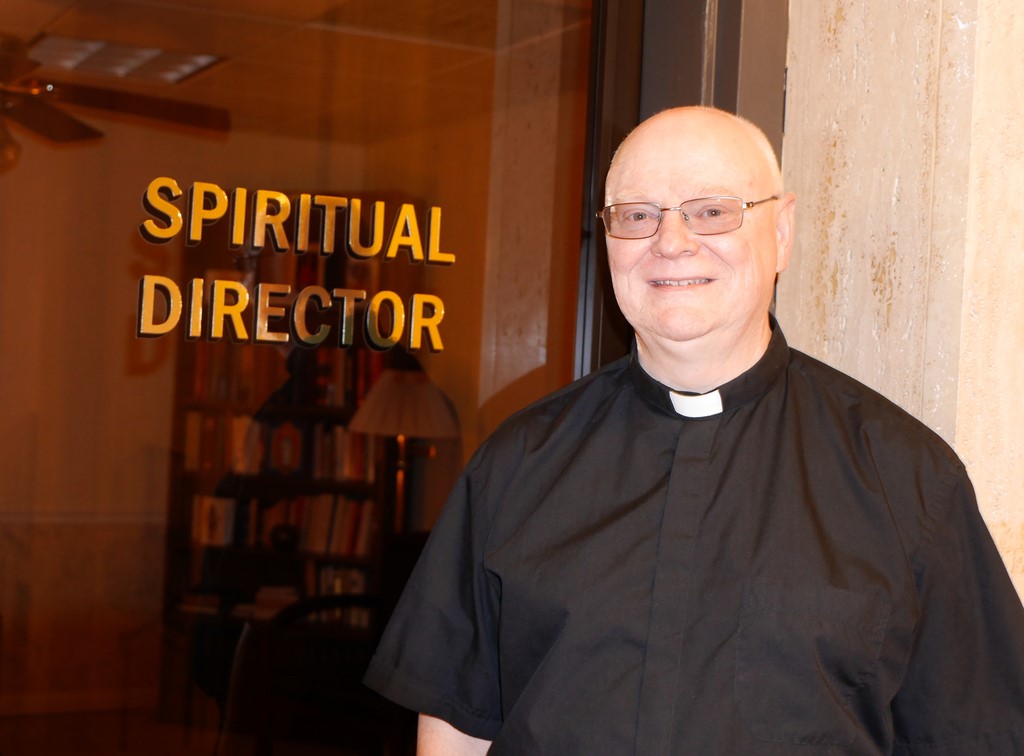|
"The Mystery of God"
The connections, parallels, and symbolism of today’s reading in Mark with the OT are a clear and comforting confirmation of the two pillars of our Faith: God’s Law represented by Moses, and God’s Love, represented by Elijah who predicted the coming of the Messiah, Jesus, himself a parallel to God’s many visits in the OT which include Moses and Elijah. But above all, the Transfiguration, symbolizes Christ’s coming resurrection, which brings into full focus the mystery of God. Albert Einstein once said, “The most beautiful thing we can experience is the mysterious. It is the source of all true art and science. He to whom this emotion is a stranger, who can no longer pause to wonder and stand rapt in awe, is as good as dead, because his very eyes are closed.” The mystery inside life is as real as the physical matter which makes up its outer visible nature. But it is something our modern age struggles with. Some rationalize Abraham’s call to sacrifice his son, Isaac, as a psychotic response to words he perhaps heard in his head – not God. Also, history tells us it was common practice for children to be sacrificed in these early cultures. But to accept men saw their companion levitate and join with two other long deceased men in a cloud of luminous light is the stuff of myth or tall-tales. So, why preach to believers the importance of embracing this mystery? Isn’t it part of our belief system? But the fact remains some Christians have doubts, eg. some do not believe in the ‘real presence’ of God in the Eucharist. How can something unseen exist? Today’s society takes a systematic approach to life that everything can be broken down and understood under a microscope, called: ‘reductionism’. In theologian, Philip Yancey’s, book, Rumours Of Another World, he tells us, “The reducers’ approach allows no place for an invisible world. It takes for granted the world of matter is the sum total of existence. Looking at the parts, we judge them [to be] the whole of reality,” (p.19). He recalls how on the back of science texts you could purchase all the chemicals of the human body from a catalogue for 85 cents, “… which does nothing to explain the magnificence of an athlete,” (p.17). “[So], since God cannot be examined, tested, quantified or reduced … societies advanced in technology go about their daily lives assuming God does not exist … their [senses] sealed against rumours of another world. As Tolstoy [once] said, ‘materialists mistake what limits life, for life itself,’” (p.18-19). Yancey points out, “No society in history has attempted to live without a belief in the sacred, not until the modern [Western world].” But this has had consequences, putting us in a kind of moral turmoil. The meaning and purpose of life are confused. Without God, without recognition we are more than our physical bodies, we live in a state of constant self-gratification and self-care, but also constant searching and emptiness. There is no meaning or purpose to life without the mystery which surges beneath the surface of everything, the mystery of God and his guidance in our lives. Simon, James and John were profoundly blessed to see with their physical eyes the mystery revealed to them. Sometimes I imagine them trying to tell people what they had experienced, how they were so terrified they didn’t know what to do, offering to build shelters for the effervescent beings before them. But now they understood the significance: there are in a sense two worlds, one seen with our eyes, but the other found from within. Which one is the more real? While they are intertwined, the unseen is the most important: our eternity! Jesus would later tell them, “The kingdom of God is not coming with things that can be observed; … For, in fact, the kingdom of God is among you,” (Luke 17.20-21) … or inside us spiritually! As people of faith, we must believe and accept the mystery of this super-natural event, because, first, it is truly part of our natural world; second, because it shows us how much bigger, broader and complex life really is. All creation may be visible, but it is alive with the deep mystery of God’s design. Incorporating this mystery of God into our belief system is critical, not only to give us hope, but to inspire us to strive for those things which ‘are not of this world’, to engage with care and holiness this mysterious gift of life to hopefully secure a place at God’s table. This past week CWL members and others accepted a Lenten challenge to develop their inner spirituality by asking themselves, “Who am I?” This week, we will ask, “Where did I come from?” Each week a different, self-directed question. After Easter we will look under God’s microscope to see where it has taken us. – Rev Fr Christopher Tracey, Saint Joseph Parish, Saugeen Shores, Ontario
0 Comments
Your comment will be posted after it is approved.
Leave a Reply. |
Father's Blog
Rev. Fr. Christopher Tracey
St. Joseph Parish Pastor Archives
January 2022
|
